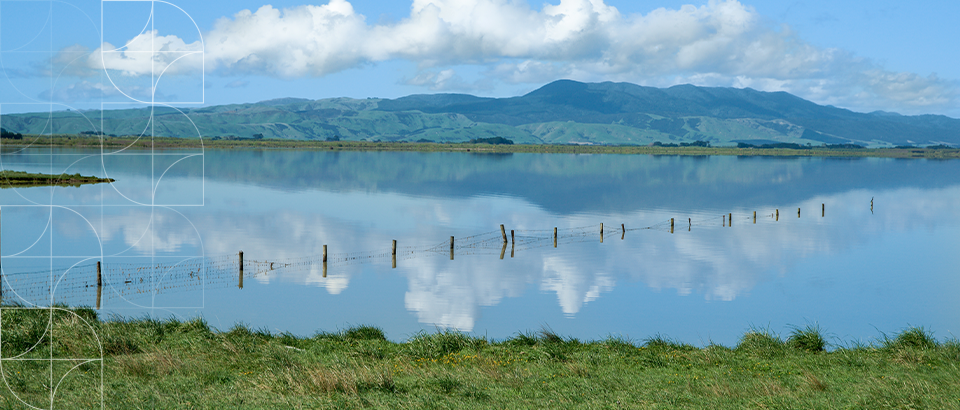From Floods to Faults: New National Policy Proposed

From Floods to Faults: New National Policy Proposed
Wednesday 16 July, 2025
Due to our location on the boundary of the Pacific and Australian tectonic plates, not to mention our numerous fault lines and volcanic / geothermal activity, New Zealand is exposed to a broad range of natural hazards. Thanks to climate change, some of these natural hazard events are also increasing in both severity and frequency – a prime example being 2023 with regions such as Auckland, Northland, Hawkes Bay, Bay of Plenty and Waikato experiencing repeated severe weather events and local states of emergency.
The key tool in currently managing natural hazard risk is the Resource Management Act 1991 (RMA) which determines how, and where, new development occurs. However, while the RMA requires local authorities to manage significant risk from natural hazards (as a matter of national importance) when making plans and assessing applications for resource consent, the RMA does not define what is meant by ‘significant risk’ nor does it set out a process to be followed. Without this national guidance, local authorities throughout the country have developed different approaches to identifying, assessing and managing natural hazard risk, resulting in varied natural hazard provisions in district and regional plans. To address this issue, the Government is proposing to introduce a new National Policy Statement for Natural Hazards (NPS-NH) as part of Package 1 of its proposal to reform national direction under the RMA.
Purpose
The aim of the proposed NPS-NH is to improve natural hazard risk management in New Zealand by requiring local authorities to take a risk-based approach to managing natural hazard risks, respond proportionately to the level of natural hazard risk and use the best available information when assessing and managing natural hazard risk. The proposed NPS-NH is intended to be a first step towards more comprehensive national direction for natural hazards in the future.
Scope
The focus of the NPS-NH is on ensuring the resilience of ‘new’ development on the basis that the RMA is, in Government’s opinion, not designed to support climate adaptation for existing homes and other structures. The NPS-NH is proposed to apply to new subdivision, use and development in all environments and zones, including the coastal environment. ‘New development’ under the NPS-NH includes the development of new buildings or structures on land that does not already contain these and the extension or replacement of existing buildings and structures. The NPS-NH is not proposed to apply to ‘infrastructure’, as defined in the RMA, and ‘primary production’, as defined in the National Planning Standards. Application of the proposed NPS-NH to a wider scope of activities is an option to be revisited in future policy work.
The NPS-NH is proposed to apply to only seven natural hazards: flooding; landslips; coastal erosion; coastal inundation; active faults; liquefaction and tsunami. However, this is not intended to prevent or limit local authorities from having policy on other natural hazards, activities or the environment.
Key features
The NPS-NH does not set out how local authorities should respond to a specific level of natural hazard risk. Instead, it requires local authorities to ‘proportionately manage’ natural hazard risk, meaning limiting high-risk activities and enabling low-risk activities.
To reflect that the risk associated with some development is greater than that of others, the proposed NPS-NH directs local authorities to take a risk-based approach to new development, assessing a specific development proposal for risk from a specific natural hazard. As part of this, the NPS-NH proposes to introduce a definition for ‘significant risk from natural hazards’. The proposed definition sets out for local authorities the level of natural hazard risk which would require new subdivision, land use or development proposals to include mitigation and introduces nationally consistent language for natural hazard risk which local authorities can use. To help with defining ‘significant risk from natural hazards’, the proposed definition also introduces a matrix which identifies the levels of natural hazard risk using combinations of defined likelihood and consequences.
Implications of the proposed policies
The Government has made it clear that the proposed NPS-NH is a ‘first step’ in addressing the variability in the way the planning system currently manages natural hazard risk, establishing a foundation upon which a more comprehensive intervention can be proposed through future resource management reform.
Once operative, the proposed NPS-NH will have immediate influence on local authorities’ decision making when making plan changes (including private plan changes) and assessing resource consent applications. Applicants will also need to ensure resource consent applications address the NPS-NH requirements. Government has deliberately omitted a date as to when existing regional or district plans must give effect to the proposed NPS-NH. This is so local authorities do not feel obliged to undertake plan changes ahead of the replacement of the RMA. It is expected that any local authority preparing plan changes relating to natural hazards at the time the proposed NPS-NH comes into effect will incorporate the requirements of the NPS-NH.
The expected implementation of the proposed NPS-NH in the short term is through resource consents which is why the proposal does not adopt a more directive approach for local authorities on responding to natural hazard risk. In the absence of a high level of directiveness, local authorities will have discretion in interpreting and implementing the proposed policies. Despite the Government’s intention for the NPS-NH to improve consistency in the management of natural hazard risk, the lack of high-level policy directives may in fact result in increased variation and inconsistency in practice.
View the next article in our series on the proposed new National Environmental Standards for Papakāinga.
Consultation on the changes proposed within Package 1 close on 27 July 2025. If you have any questions on the Government’s proposal to introduce a new NPS-NH or would like assistance with making a submission on the proposal, please contact one of our experts below.








